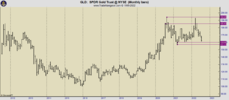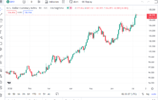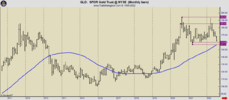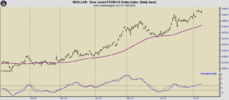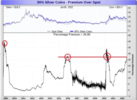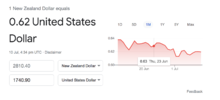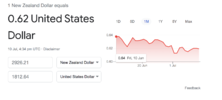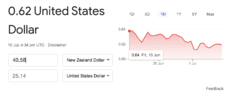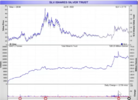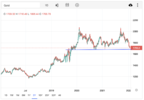- Joined
- 28 May 2020
- Posts
- 6,960
- Reactions
- 13,453
At a time when inflation is running high in virtually every country, when fiat currencies are seeing the results of massive increases of money supply, one might expect that PM's would be very much in demand and thus being on a rising curve.
Of course, we have the exact opposite.
There have been numerous articles about just how much of the PM market is gamed by the big banks, the only question has really ever been exactly who are the counterparties.
From Wall Street on Parade
The OCC report had a footnote that explained this large jump.
Open market systems, by the banks , for the banks.
Mick
Of course, we have the exact opposite.
There have been numerous articles about just how much of the PM market is gamed by the big banks, the only question has really ever been exactly who are the counterparties.
From Wall Street on Parade
One of the reasons for the massive growth is that for some bizarre reason, the big banks have been allowed to call so many of these derivitive products as exchange derivitive products.Last Tuesday, the Office of the Comptroller of the Currency (OCC) released its quarterly report on derivatives held at the megabanks on Wall Street. As we browsed through the standard graphs that are included in the quarterly report, one graph jumped out at us. It showed a measured growth in precious metals derivatives at insured U.S. commercial banks and savings associations over the past two decades and then an explosion in growth between the last quarter of 2021 and the end of the first quarter of this year.
In just one quarter, precious metals derivatives had soared from $79.28 billion to $491.87 billion. That’s a 520 percent increase in a span of three months. (See Figure 18 at this link. The last ten years of the graph is shown above.)
Having studied these quarterly reports since the 2008 financial crash, we knew where to head next. We went to the graphs in the OCC report showing the breakdown of different categories of derivatives at specific banks. Table 21 showed that precious metals contracts at JPMorgan Chase had spiked to $330.123 billion as of March 31, 2022. The same table showed that Citigroup’s insured commercial bank, Citibank, held $114.148 billion in precious metals derivatives.
According to the Federal Deposit Insurance Corporation, as of March 31, 2022, there were 4,796 federally insured banks and savings associations in the U.S. Combine that figure with the latest report from the OCC and it means that just two banks, JPMorgan Chase and Citibank, control 90 percent of the precious metals derivatives of all 4,796 insured financial institutions in the U.S.
We checked the previous OCC report for the quarter ending December 31, 2021. It showed that at year-end 2021, JPMorgan Chase had reported only $28.182 billion in precious metals derivatives versus $330.123 billion three months later – a staggering increase of 1,071 percent.
The OCC report had a footnote that explained this large jump.
So for how long has this scam being running?“Beginning January 1, 2022, the largest banks are required to calculate their derivative exposure amount for regulatory capital purposes using the Standardized Approach for Counterparty Credit Risk (SA-CCR). Under SA-CCR gold derivatives are considered precious metals derivative contracts rather than an exchange rate derivative contract resulting in an increase in reported precious metals derivative contracts compared to prior quarters….”
The Justice department wrote of JPM after its last felony chargeThe footnote raised more questions than it answered. According to legal definitions available at Cornell Law School (not to mention common sense), an “exchange rate derivative contract” is “a cross-currency interest rate swap, forward foreign-exchange contract, currency option purchased, or any other instrument linked to exchange rates that gives rise to similar counterparty credit risks.”
Why would a gold derivatives contract have ever been classified as an exchange rate contract? Gold contracts are to foreign exchange contracts what zebras are to a centipede.
There is the decided perception that Wall Street megabanks have been hiding from the public the true extent of their involvement in the gold market through some ginned-up derivative definition.
In addition to the wild growth in precious metals exposure at JPMorgan Chase, Citibank’s precious metals holdings in one quarter had grown from $6.979 billion to $114.148 billion. But Bank of America, a peer bank to JPMorgan Chase and Citibank, showed no such gargantuan increase in its precious metals holdings from year-end 2021 to March 31, 2022. The OCC reports that Bank of America held $27.32 billion in precious metals contracts on December 31, 2021 versus $29.441 billion on March 31, 2022. An increase of just 7.76 percent.
And yet they are allowed to just keep gaming the system.“…knowingly and intentionally placed orders to buy and sell precious metals futures contracts with the intent to cancel those orders before execution (‘Deceptive PM [Precious Metals] Orders’), including in an attempt to profit by deceiving other market participants through false and fraudulent pretenses and representations concerning the existence of genuine supply and demand for precious metals futures contracts. By placing Deceptive PM Orders, the Subject PM Traders intended to inject false and misleading information about the genuine supply and demand for precious metals futures contracts into the markets, and to deceive other participants in those markets into believing something untrue, namely that the visible order book accurately reflected market-based forces of supply and demand. This false and misleading information was intended to, and at times did, trick other market participants, including competitor financial institutions and proprietary traders, into reacting to the apparent change and imbalance in supply and demand by buying and selling precious metals futures contracts at quantities, prices, and times that they otherwise likely would not have traded.”
Open market systems, by the banks , for the banks.
Mick

